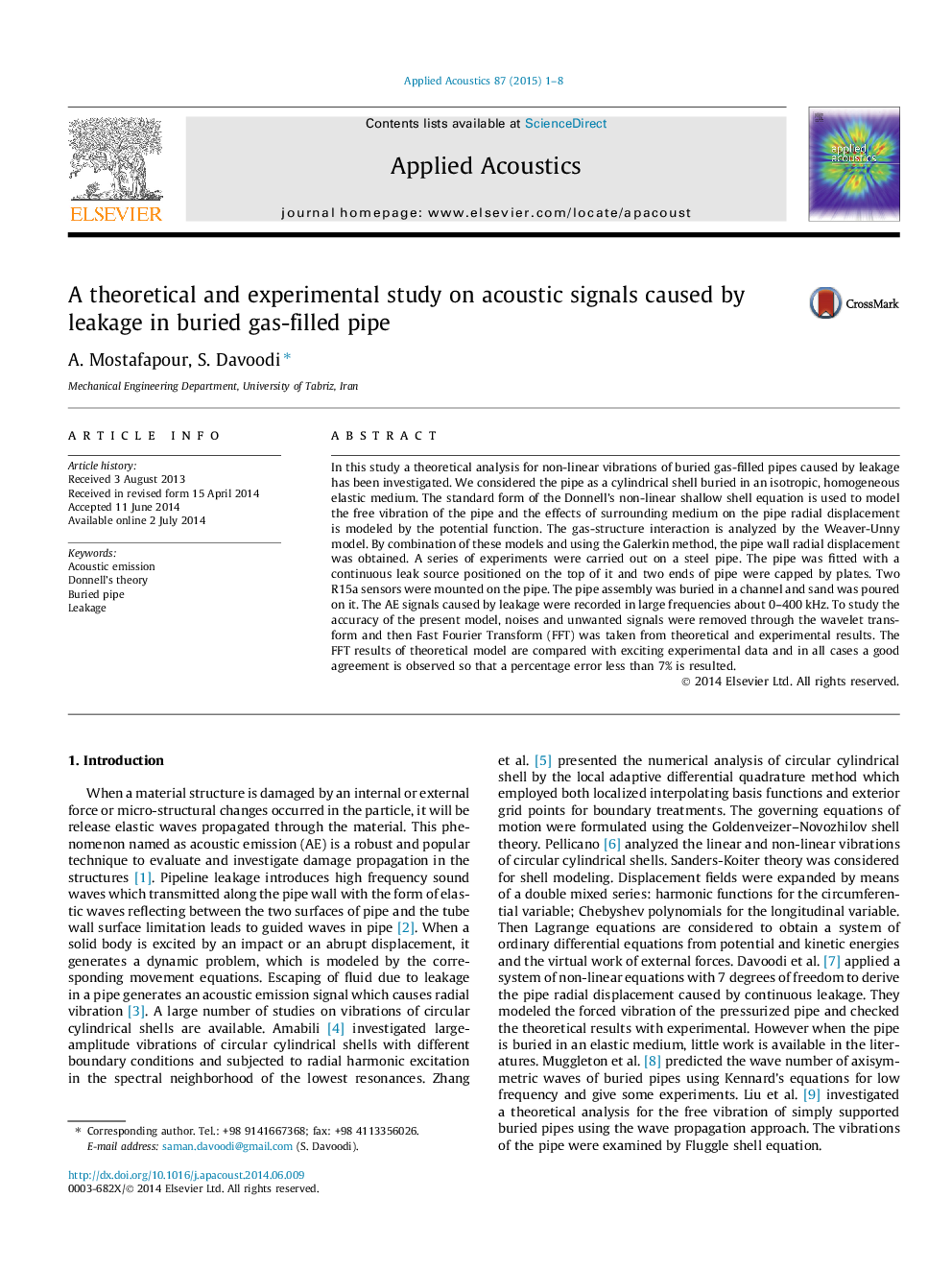| Article ID | Journal | Published Year | Pages | File Type |
|---|---|---|---|---|
| 754561 | Applied Acoustics | 2015 | 8 Pages |
•Modeling of buried pipe radial displacement caused by acoustic emission.•Donnell’s non-linear theory.•Weaver-Unny theory.•Simulated continuous leak source used in acoustic emission testing propagated waves in a wide range of frequencies.•Theoretical model was solved numerically but it was checked experimentally.
In this study a theoretical analysis for non-linear vibrations of buried gas-filled pipes caused by leakage has been investigated. We considered the pipe as a cylindrical shell buried in an isotropic, homogeneous elastic medium. The standard form of the Donnell’s non-linear shallow shell equation is used to model the free vibration of the pipe and the effects of surrounding medium on the pipe radial displacement is modeled by the potential function. The gas-structure interaction is analyzed by the Weaver-Unny model. By combination of these models and using the Galerkin method, the pipe wall radial displacement was obtained. A series of experiments were carried out on a steel pipe. The pipe was fitted with a continuous leak source positioned on the top of it and two ends of pipe were capped by plates. Two R15a sensors were mounted on the pipe. The pipe assembly was buried in a channel and sand was poured on it. The AE signals caused by leakage were recorded in large frequencies about 0–400 kHz. To study the accuracy of the present model, noises and unwanted signals were removed through the wavelet transform and then Fast Fourier Transform (FFT) was taken from theoretical and experimental results. The FFT results of theoretical model are compared with exciting experimental data and in all cases a good agreement is observed so that a percentage error less than 7% is resulted.
